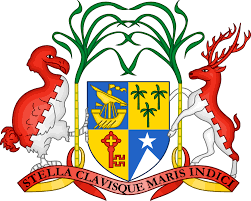

The Coat of arms of Mauritius, stipulated in the “Mauritius Law of 1990 Vol. 2 SCHEDULE (Section 2), summarise perfectly the history, the natural resources, the key strengths and the strategic importance of the island in the region.
Designed in 1906, it shows -in the first quarter a ship referring to the Europeans settlers (the Portuguese, the Dutch, the French and the English respectively).
The second quarter portrays three palm trees and three dependencies of Mauritius namely Rodrigues – about 560 km (350 miles) to the northeast, covering an area of 110 km2 (42.5 square miles), Agalega – 1,122 km (697 miles) to the north, consisting of two islands with a total area of 70 km2 (27 square miles) and the Cargados Carajos Shoals also known as St Brandon.
The key symbolises the strategic geographic importance of the island in the past (on the Spice Route) and nowadays as a regional economic, financial, commercial and air transport hub.
The fourth quarter depicts the island as the star of the Indian Ocean.
The dodo (Raphus cucullatus) and a sambar deer (Rusa unicolor) represent the extinct and present Mauritian wildlife.
The two green sugar cane stems show the key role played by sugar (considered as gold centuries back) in the economic success of Mauritius.
The lower part of the arms portray the island as the Star and the Key of the Indian Ocean – Stella Clavisque Maris Indici.
